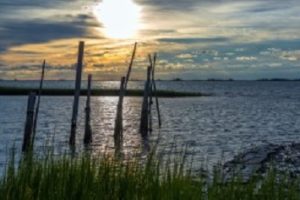The Depart of the Interior’s (DOI) Bureau of Ocean Energy Management (BOEM) has published a final rule that codifies existing policies and procedures governing negotiated, noncompetitive agreements on the use of Outer Continental Shelf (OCS) sand, gravel, and/or shell resources.

Generally, these resources are used by state, local, and other federal agencies as well as by companies and private citizens to rebuild eroding shoreline segments, such as beaches and dunes, barrier islands, and wetlands.
Essential to Shore Protection
The BOEM states that its Marine Minerals Program is critical to the long-term success and cost-effectiveness of many shore protection, beach nourishment, and coastal habitat restoration projects along the Gulf of Mexico and Atlantic coasts.
“Coastal erosion, especially in the wake of massive storms, such as Hurricanes Maria, Irma and Harvey, is a serious challenge affecting energy, defense, and public infrastructure, as well as tourism, which is important to state and local economies,” said Acting BOEM Director Walter Cruickshank. “Adding crucial sand, gravel, or shell resources to existing beaches and dunes help to combat future storm and long-term erosion.”
Use of OCS resources typically involves placing sand, gravel, or shells directly on the beach, in open water areas that are the location of an eroded beach, and/or within breaches in the shoreline that compromise the integrity of the beach or barrier island system or its capacity to form, and subsequently maintain, a beach. Material may also be placed “up drift” from the beach, allowing longshore processes to redistribute the sand, gravel, and/or shell resources along the beach. In sensitive wetland areas, these projects are intended to forestall further erosion, restore habitat, and/or provide protection from hurricanes and storms.
Two Types of Agreements
Negotiated agreements may take the form of a lease for nongovernment entities or a memorandum of agreement (MOA) for government agencies. The BOEM says it has negotiated over 50 noncompetitive agreements, providing for the use of more than 100 million cubic yards of OCS sand, gravel, and/or shell resources for shore restoration and protection restoration projects along more than 300 miles of coastline.
All these agreements have been negotiated without the benefit of implementing regulations. The BOEM says it believes that promulgation of regulations at this time is advisable to provide additional clarity and certainty and to help ensure continuity of the Marine Minerals Program.
Topics covered in the final rule include which entities qualify for a project; the rights entities have to seek reconsideration of an unfavorable decision by the BOEM; the minimum contents of an agreement to use OCS sand, gravel, and/or shell resources; how to submit a request for an agreement; how the BOEM determines if a project qualifies; the process the BOEM uses to technically and environmentally evaluate a qualifying project: the process for negotiating and executing an agreement; the information that must be included in an agreement; and how the BOEM enforces the agreement.
The Outer Continental Shelf Lands Act (OCSLA) authorizes that the DOI may assess fees on entities based on the value of the resources covered by the rule; however, the OCSLA prohibits the assessment of fees either directly or indirectly against a federal, state, or local agency.
The final rule was published in the October 3, 2017, FR.
